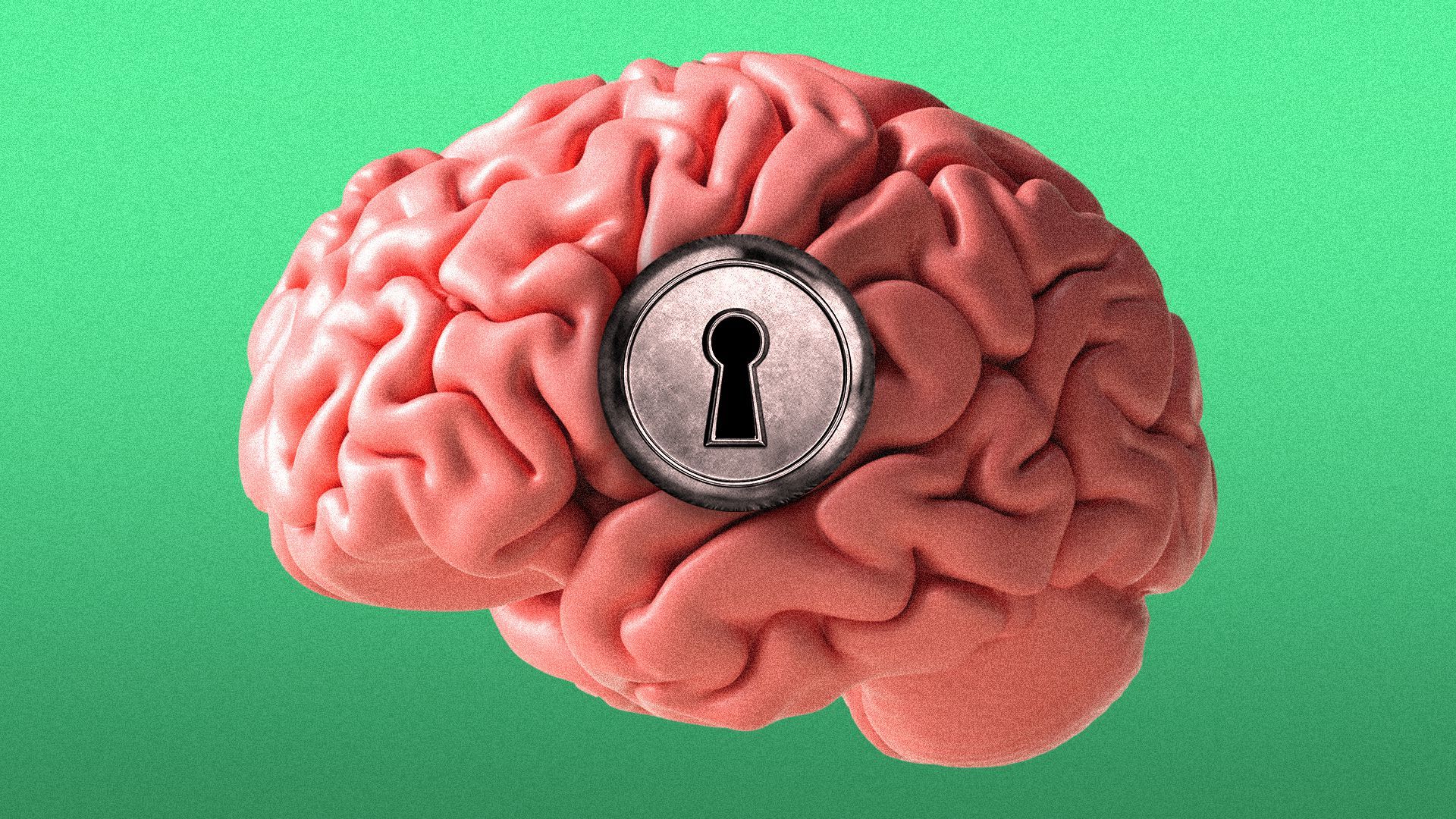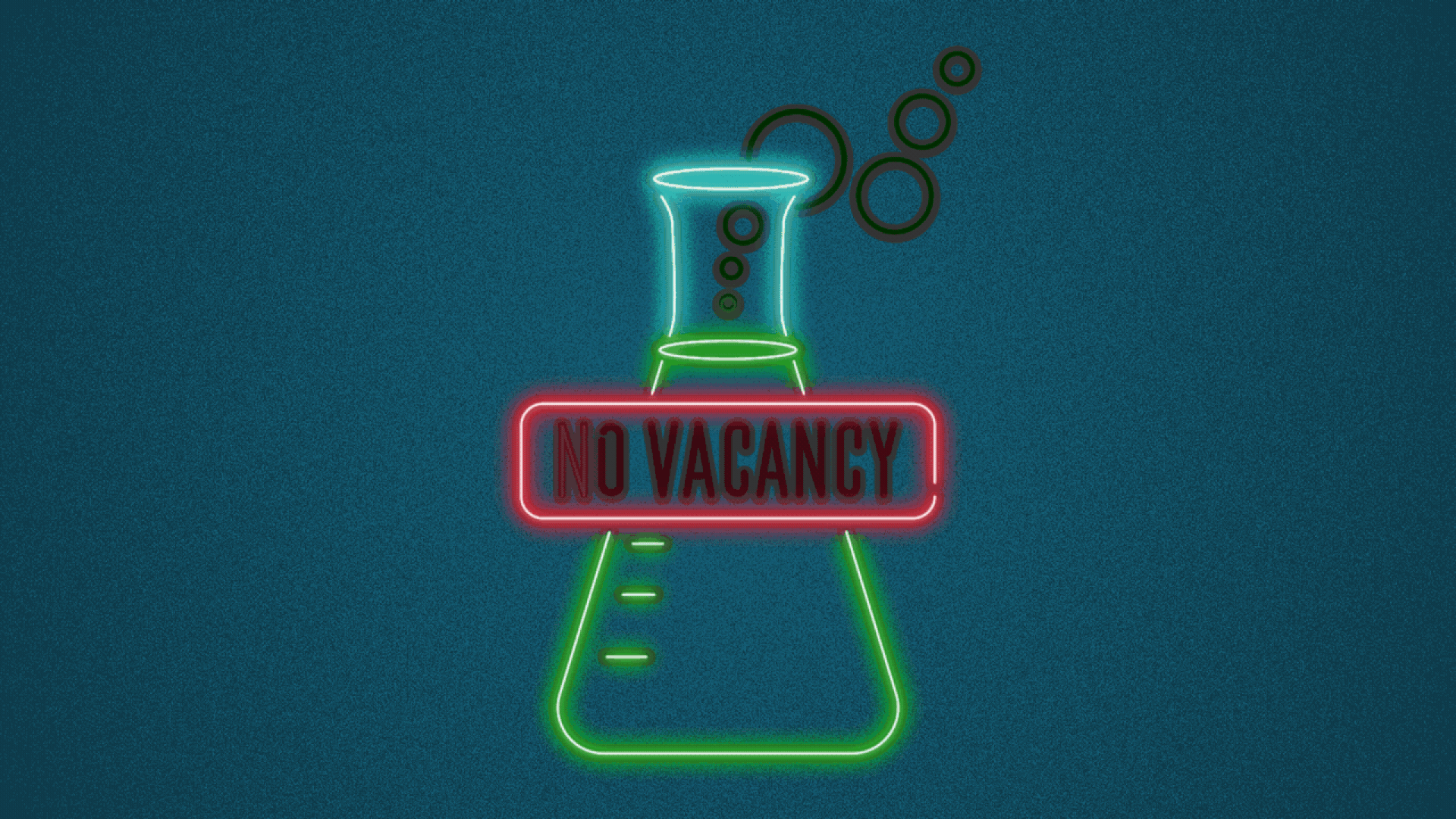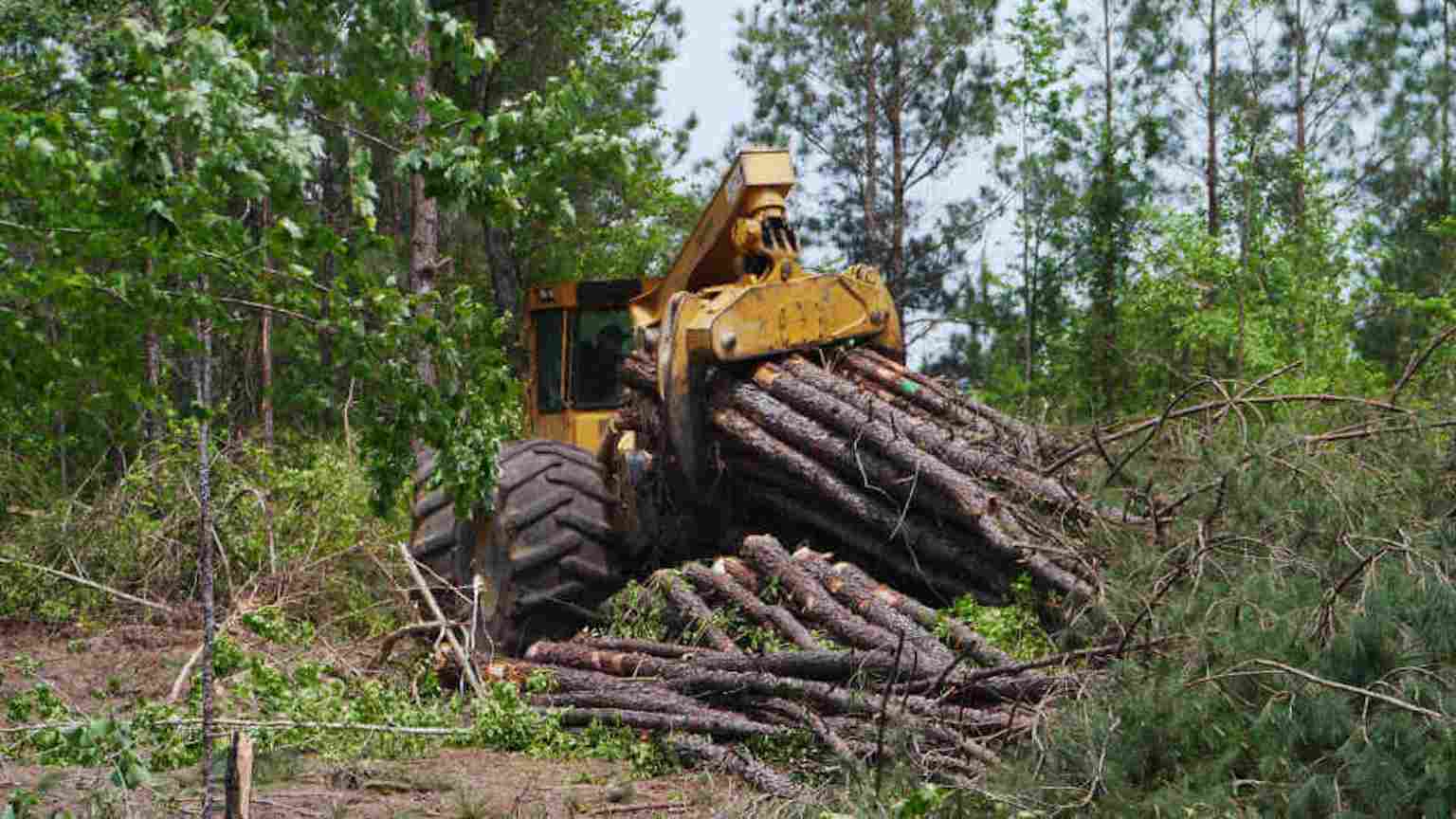| | | | | | | Presented By NRDC | | | | Axios Science | | By Alison Snyder ·Dec 09, 2021 | | Good afternoon. Today's newsletter is 1,479 words, a 5½-minute read. | | | | | | 1 big thing: The quest to unlock precision psychiatry |  | | | Illustration: Shoshana Gordon/Axios | | | | Psychiatrists and neuroscientists are trying to use biological markers in the brain for depression and other psychiatric disorders to sharpen diagnoses and find more precise treatments. Why it matters: Mental health disorders affect an estimated 1 in 4 adults in the U.S. each year. More than half don't receive treatment, and for those that take medication, finding the most effective one can be a trial-and-error process. - Proponents of precision psychiatry argue the approach can help — but how much is debated.
Background: The Diagnostic and Statistical Manual of Mental Disorders (DSM), first published by the American Psychiatric Association in 1952 with four subsequent updates, describes criteria for diagnosing psychiatric disorders, largely based on behavioral symptoms. - The manual introduced a shared language to the field of psychiatry that continues to guide diagnosis and, just as importantly, insurance and billing codes, and also frames research questions.
But there's ongoing debate about how reliable the DSM's symptom criteria are for diagnosis and whether a diagnosis successfully predicts how someone will respond to treatment. - A recent study from the nonprofit Sapien Labs used mental health symptoms self-reported by more than 100,000 adults to see whether the DSM meaningfully separates people by their symptoms.
- They found, for example, the symptoms of two people grouped as having autism spectrum disorder may be as different as those for a person in that group and one categorized as having ADHD.
- "Recruiting people into clinical trials based on more homogeneous symptom profiles rather than the heterogeneous profiles of the DSM can help the search for biological markers of disorders," says Tara Thiagarajan, a neuroscientist and founder of Sapien Labs.
What's happening: In recent years, researchers have found some biological markers of schizophrenia, major depressive disorder and PTSD. - "But none of them have yet reached the point where anyone has been able to demonstrate their value for psychiatric diagnosis per se," says Paul Appelbaum, a professor of psychiatry at Columbia University who chairs the DSM steering committee.
Aside from diagnosis, some biomarkers are now being assessed to try to predict better treatment outcomes for people, including by two startups that emerged in October —Neumora Therapeutics and Alto Neuroscience. - They are using a variety of biomarkers — including imaging of the brain's networks, genetics, EEG brain wave measurements and behavioral data from wearable devices — to try to determine who might have a better outcome from a drug or other treatment.
- The approach is nascent, but Amit Etkin, Alto's founder and CEO, hopes that over the next 10 years psychiatry will make the kind of progress oncology has by using genomics to better understand cancer mutations and harnessing that information to match therapies to individuals.
- "Psychiatry is stuck in the '90s and with the myth of the silver bullet" of a single drug or treatment that works for everyone determined to have a disorder, Etkin says.
The big picture: Critics say precision psychiatry puts too much emphasis on the biological underpinnings of disease and not enough on the experiences and environment that shape it. - In a forthcoming book, "Healing: Our Path from Mental Illness to Mental Health," Tom Insel, a former director of the National Institute of Mental Health and an adviser to Alto Neuroscience, argues "the problems are indeed medical but the solutions are social, relational, environmental, and political."
Read the entire story. |     | | | | | | 2. Catch up quick on COVID-19 |  Data: N.Y. Times; Cartogram: Kavya Beheraj/Axios "COVID-19 cases and deaths are rising all across the U.S. even before the Omicron variant takes hold," Axios' Sam Baker and Kavya Beheraj write. The FDA today authorized Pfizer booster shots for 16- and 17-year-olds, per Axios' Rebecca Falconer. "Preliminary studies suggest two doses of existing coronavirus vaccines are significantly less effective against the Omicron variant, but booster shots confer much stronger immunity," Axios' Caitlin Owens reports. |     | | | | | | 3. How grass grows |  | | | Photo: Annis Richardson/University of Edinburgh | | | | A new study shows how grass gets its advantageous shape. Why it matters: The finding provides fresh insight into a long-0standing question of how plants grow and, even more fundamentally, how the cells of living organisms organize into shapes. Catch up quick: There are two types of flowering plants — monocots, including grasses like maize and wheat, and eudicots, including broccoli, beans, carrots and other vegetables, as well as many trees and shrubs. - The leaves of eudicots grow away from stems on stalks and have veins that spread across their broad surface.
- Monocots' leaves form a tubular stem, called the sheath, and their veins are parallel. The growing tip of the grass stays close to the ground while the sheath extends, allowing grass to grow back quickly after it is mowed down or eaten, says Enrico Coen, a plant biologist at the John Innes Centre in Norwich, U.K., and an author of the study published today in Science.
- "Grass is just an amazing thing.... Every week we go out with our mowers and slaughter it and it just comes back, at least in the growing season," he says.
The backstory: In the 19th century, botanists thought the sheaths of grasses corresponded to the stalk on other plants. - But in the 20th century, plant morphologists proposed that, because the parallel veins of the grass are similar to those in stalks of other plants, the entire blade of grass corresponds to the stalk. That view dominated until now, Coen says.
What's old is new: To test the two hypotheses, the researchers combined information about what happens to the shape of a leaf when a gene is mutated and computational models predicting how grass grows. - They found the 19th century model made correct predictions about the leaf growth and the other did not.
|     | | | | | | A message from NRDC | | Burning trees for electricity is not a sustainable business model | | |  | | | | With promises of jobs and lies about carbon neutrality, we see over and over that the biomass industry is failing to deliver on false promises, leaving communities in worse shape. Tell the Senate: Stop the handout to biomass companies. Get more details. | | | | | | 4. Exploding demand for laboratory space |  | | | Illustration: Brendan Lynch/Axios | | | | Office occupancy rates remain deflated across industries, but one type of workplace is in high demand: labs, Axios' Erica Pandey writes. The big picture: A number of trends — in public health, American demographics and venture capital funding — are colliding to supercharge the life sciences industry. Driving the news: U.S. office vacancy rates are at 17%, but lab vacancy rates are at 5%, according to a new report from the commercial real estate firm CBRE. Money is pouring into life sciences companies. Venture capitalists are throwing money at gene editing and other promising therapies, at the same time that an aging American population is driving up health care spending. - The annual amount of venture capital flowing to life sciences companies has roughly doubled since 2019 to a whopping $32 billion, per CBRE and CB Insights data in the report.
- Federal health care spending made up around 4% of GDP in 2006, but that's expected to swell to over 8% by 2040, according to the Congressional Budget Office.
What's happening: "This was a sector that was white-hot prior to the pandemic," says Jon Varholak, a vice chairman at CBRE who specializes in life sciences real estate. "The pandemic poured more gasoline on the fire." - Biotech job openings are growing at their fastest pace on record, outpacing the notoriously hot tech sector, per a CBRE analysis of Bureau of Labor Statistics data.
And here's another new trend: Even though life sciences jobs have traditionally been located outside of cities — where there's ample inexpensive space for big labs and campuses — the strongest demand for lab space is actually in urban areas, says Ian Anderson, CBRE's head of office research in the Americas. Read the rest. |     | | | | | | 5. Worthy of your time | | Texas pterosaur leapt before flying (Asher Price — Axios Austin) New NASA telescope will provide X-ray views of the universe (Jonathan O'Callaghan — NYT) Darwin in a lab: Coral evolution tweaked for global warming (Caleb Jones — AP) Welcome to the jungle (Nishita Jha — BuzzFeed News) |     | | | | | | 6. Something wondrous |  | | | Alma Thomas, Snoopy Sees a Sunrise, 1970; Smithsonian National Air and Space Museum, Washington, D.C. Image courtesy of The Phillips Collection | | | | With bright abstractions of the view from an Apollo 10 spacecraft and of a global dust storm that engulfed Mars in 1971, painter Alma Thomas captured the limitlessness of space in her fragmented brush strokes. What's happening: An exhibition of the artist's work is currently on view at The Phillips Collection in Washington, D.C. - In an event on Tuesday evening, Cynthia Hodge-Thorne, a curatorial fellow at the Baltimore Museum of Art, described how in the 1960s and '70s Thomas came to focus on the space race during the "tragic lows of our heightened racial issues in America at the time."
The details: Thomas, who would listen to updates and dispatches from the Apollo missions as she worked, was fascinated with space. "I was born in the horse and buggy days, and now experience the phenomenal changes of the 20th century machine and space age." — Alma Thomas For Thomas, who in 1972 became the first African-American woman to have a solo show at the Whitney Museum of American Art, "space was an arena of experimentation in which anything — artistically, creatively or liberally in society — all of this could be made real," said Hodge-Thorne. - Thomas' "abstraction of outer space enabled her and her audience to envision possible futures rather than focus on the past," she said.
- "When I paint space, I am with the astronauts," Thomas said.
|     | | | | | | A message from NRDC | | Biomass hardly lives up to its carbon-cutting reputation | | |  | | | | For years, scientists warned that burning trees to produce electricity worsens climate change, much like coal and other fossil fuels. Tell Senator Jeanne Shaheen: Burning trees in power plants is not carbon neutral. Learn more. Photo: U.S. Forest Service. | | | | Thanks to Shoshana Gordon for this week's illustration and to Amy Stern for copy editing the edition. |  | Bring the strength of Smart Brevity® to your team — more effective communications, powered by Axios HQ. | | | | | | Axios thanks our partners for supporting our newsletters. If you're interested in advertising, learn more here.
Sponsorship has no influence on editorial content. Axios, 3100 Clarendon Blvd, Suite 1300, Arlington VA 22201 | | | You received this email because you signed up for newsletters from Axios.
Change your preferences or unsubscribe here. | | | Was this email forwarded to you?
Sign up now to get Axios in your inbox. | | | | Follow Axios on social media:    | | | | | |









No comments:
Post a Comment